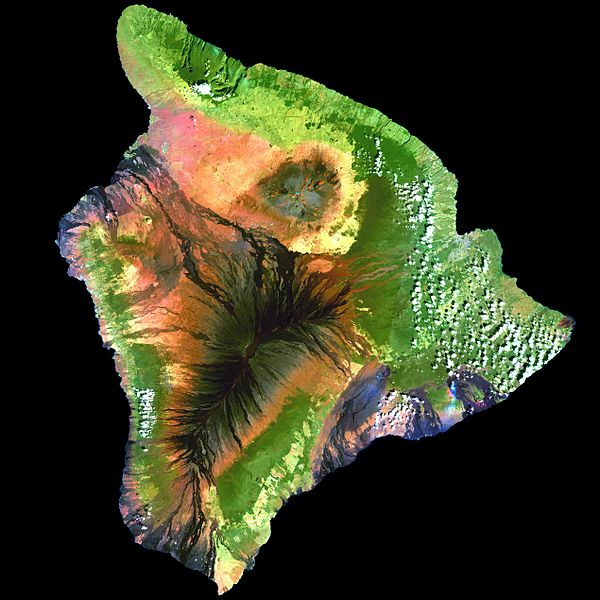Restr:Island of Hawai'i - Landsat mosaic.jpg

Ment ar rakweled-mañ : 600 × 600 piksel. pizhderioù all : 240 × 240 piksel | 480 × 480 piksel | 768 × 768 piksel | 1 024 × 1 024 piksel | 2 048 × 2 048 piksel | 5 076 × 5 076 piksel.
Restr orin (5 076 × 5 076 piksel, ment ar restr : 5,19 Mio, seurt MIME : image/jpeg)
Istor ar restr
Klikañ war un deiziad/eur da welet ar restr evel ma oa da neuze.
| Deiziad/Eur | Munud | Mentoù | Implijer | Notenn | |
|---|---|---|---|---|---|
| red | 1 Gwe 2009 da 11:59 |  | 5 076 × 5 076 (5,19 Mio) | Túrelio | saved with 95% quality (low compression), but without "progressive" option |
| 1 Gwe 2009 da 11:59 |  | 5 076 × 5 076 (4,9 Mio) | Bidgee | Fix thumbnail generation issue caused by progressive loading. | |
| 1 Gwe 2009 da 11:31 |  | 5 076 × 5 076 (4,91 Mio) | Rocket000 | reuploading | |
| 27 Kzu 2007 da 11:52 |  | 5 076 × 5 076 (4,91 Mio) | Avenue | {{Information| |Description=This simulated true-color image of the island of Hawai'i was derived from data gathered by the Enhanced Thematic Mapper plus (ETM+) on the Landsat 7 satellite between 1999 and 2001. |Source=[http://veimages.gsfc.nasa.gov/2712/l |
Implij ar restr
Implijout a ra ar bajenn da heul ar restr-mañ :
Implij hollek ar restr
Ober a ra ar wikioù da-heul gant ar restr-mañ :
- Implij war af.wikipedia.org
- Implij war ar.wikipedia.org
- Implij war ast.wikipedia.org
- Implij war az.wikipedia.org
- Implij war be.wikipedia.org
- Implij war bn.wikipedia.org
- Implij war ca.wikipedia.org
- Implij war ceb.wikipedia.org
- Implij war cy.wikipedia.org
- Implij war de.wikipedia.org
- Implij war de.wikivoyage.org
- Implij war en.wikipedia.org
- Hawaii (island)
- Mauna Loa
- Landsat program
- Geoinformatics
- Puna, Hawaii
- User:Spikebrennan
- Portal:Hawaii/Selected article
- Portal:Hawaii/Selected article/11
- Wikipedia:Featured picture candidates/February-2008
- Wikipedia:Featured picture candidates/Big Island of Hawai'i
- User:Hawaiian Mafia
- User:Aoi/sandbox
- Implij war es.wikipedia.org
- Implij war es.wikibooks.org
- Implij war eu.wikipedia.org
- Implij war fa.wikipedia.org
- Implij war fr.wikipedia.org
- Implij war fr.wikivoyage.org
- Implij war ga.wikipedia.org
- Implij war haw.wikipedia.org
- Implij war he.wikipedia.org
- Implij war hi.wikipedia.org
- Implij war hu.wikipedia.org
- Implij war ia.wikipedia.org
- Implij war id.wikipedia.org
- Implij war incubator.wikimedia.org
- Implij war is.wikipedia.org
- Implij war ja.wikipedia.org
- Implij war jv.wikipedia.org
Gwelet muioc'h eus implij hollek ar restr-mañ.
